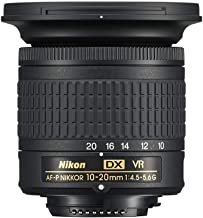Nikon Wide Angle Lens: Expand your Field of View
Introduction
I’ve had the pleasure of exploring various lenses to enhance my craft. One type of lens that has truly impressed me with its versatility and creative potential is the Nikon wide angle lens. In this article, I’ll share my experiences and insights as both an enthusiast and advisor, shedding light on the uses and benefits of Nikon wide angle lenses. Whether you’re into landscape photography, street scenes, or architecture, these lenses have much to offer.
Understanding Wide Angle Lenses
Before diving into the specifics, let’s understand what wide angle lenses are. In simple terms, these lenses have a shorter focal length, typically ranging from 10mm to 35mm. They allow you to capture a broader field of view, making them ideal for situations where you want to fit more into the frame. Unlike standard or telephoto lenses, wide angle lenses enable you to exaggerate perspective and create a sense of depth.
Benefits of Nikon Wide Angle Lenses
The benefits of using Nikon wide angle lenses are numerous. When shooting landscapes, you can showcase the vastness of nature, capturing sweeping vistas with stunning clarity. The lens’s ability to emphasize foreground elements allows you to lead the viewer’s eye and create a dynamic composition. For architectural photography, Nikon wide angle lenses help in capturing entire buildings without the need for stepping back or stitching multiple images.
Getting Creative with Perspective
One of the most exciting aspects of shooting with wide angle lenses is the opportunity to get creative with perspective. By placing prominent elements in the foreground, you can add depth and dimension to your photos. Leading lines become a powerful tool to draw the viewer’s attention to the main subject. When shooting landscapes, try positioning yourself close to a prominent element, like a rock or a tree, and notice how it transforms the image.
Low-Light Performance
Nikon wide angle lenses are not only useful in well-lit conditions but also perform remarkably well in low-light situations. The wider aperture allows more light to enter the lens, resulting in better-exposed images even when the lighting is challenging. To make the most of low-light shooting, use a sturdy tripod and experiment with longer exposure times.
Portraits with a Wide Angle Twist
You might not think of using a wide angle lens for portraits, but it can lead to some captivating results. Wide angle lenses introduce slight distortion, which can create an artistic and unique look. When photographing people, focus on their eyes, and try to maintain some distance to avoid unflattering facial proportions. This technique works exceptionally well in environmental portraits, where the surroundings play a significant role in storytelling.
Travel and Street Photography
If you enjoy capturing the essence of a place, Nikon wide angle lenses are indispensable for travel and street photography. They excel at encapsulating cityscapes, architectural wonders, and bustling streets. When photographing people on the streets, opt for candid shots to capture genuine emotions and interactions. Remember to be respectful and seek permission when necessary, especially in sensitive cultural settings.
Architecture and Interior Photography
Architectural and interior photography demands a lens that can encompass the grandeur of structures and the fine details of interiors. Nikon wide angle lenses are perfect for this purpose. When shooting buildings, pay attention to lines and symmetry, and avoid tilting the camera excessively. In tight spaces, like small rooms, these lenses help you capture the entire scene without distortion.
Choosing the Right Nikon Wide Angle Lens
Selecting the right Nikon wide angle lens depends on your specific needs and preferences. Consider factors like the lens’s maximum aperture, focal length, and whether it’s a prime or zoom lens. If you prioritize low-light performance and bokeh, a wide aperture prime lens may be the best choice. On the other hand, a zoom lens offers more flexibility in framing and composition.
Taking Care of Your Nikon Wide Angle Lens
To ensure your Nikon wide angle lens serves you well for years to come, it’s essential to take good care of it. Regularly clean the lens with a soft microfiber cloth and a blower brush to remove dust and smudges. Avoid touching the glass directly and protect the lens with a high-quality UV filter. Store the lens in a dry, dust-free environment, preferably in a padded camera bag.
Conclusion
Nikon wide angle lenses open up a world of creative possibilities for photographers. From breathtaking landscapes to architectural marvels, these lenses excel in various scenarios. Embrace their unique perspectives and creative distortions to add a touch of magic to your photography. Remember, practice makes perfect, so go out and explore the world through your Nikon wide angle lens.
FAQs
1. Can I use a Nikon wide angle lens for astrophotography?
Absolutely! Nikon wide angle lenses are excellent for capturing stunning shots of the night sky. Their wider field of view allows you to include more of the stars and the Milky Way in your frame.
2. How do I avoid lens flare when shooting with a Nikon wide angle lens?
To minimize lens flare, use a lens hood and be mindful of the angle of the light source. Additionally, consider using your hand or a piece of cardboard to shield the lens from direct sunlight.
3. Can I use a polarizing filter with a Nikon wide angle lens?
Yes, you can use a polarizing filter with a Nikon wide angle lens. It helps reduce reflections and glare, making it particularly useful for landscape photography.
4. Which Nikon wide angle lens is best for architecture photography?
For architecture photography, a prime wide angle lens with a focal length between 24mm and 35mm is often preferred. It offers excellent sharpness and minimal distortion.
5. Is a Nikon wide angle lens suitable for wildlife photography?
While wide angle lenses are not typically used for wildlife photography, they can be handy for capturing animals in their environment, showcasing the natural habitat and context. However, for close-up shots of wildlife, a telephoto lens is more appropriate.
Further reading
1. Title: “Exploring the Beauty of Landscapes with Nikon Wide Angle Lenses” URL: https://www.photographyadventures.com/nikon-wide-angle-landscapes
Description: Join fellow photographers as they share their breathtaking landscape shots captured using Nikon wide angle lenses. Learn tips and tricks for capturing nature’s beauty.
2. Title: “Wide Angle Wonders: Creative Portraits with Nikon Lenses” URL: https://www.creativephotoguide.com/nikon-wide-angle-portraits
Description: Dive into a collection of stunning wide angle portraits taken by photographers who reveal the art of capturing unique perspectives with Nikon lenses.
Nikon photo tips galore
Nikon Camera Bag: Trusted Companion for Photo Adventures
Discover Nikon F3 Film Camera: Relive Classic Film Photography Era
10 reasons to buy a Nikon DSLR Camera
Nikon film camera: Range of Exceptional film cameras






Comments are closed.